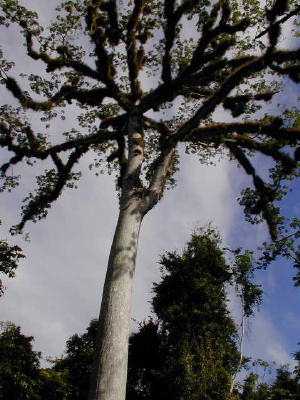
Chapter 6
Goodbye Guatemala, on to Belize

The huge Ceba tree (Kapok) was sacred to the Mayas as a link between earth and sky — many ceremonies were held at the base. (Notice the air plants on its branches.) Bread nut trees, chewing gum trees, and many others have been used for centuries by the indigenous people.
Click, more picturesAfter checking into our hotel, across the water from the town of Flores, we were all glad to get some rest. It had been a very long day.
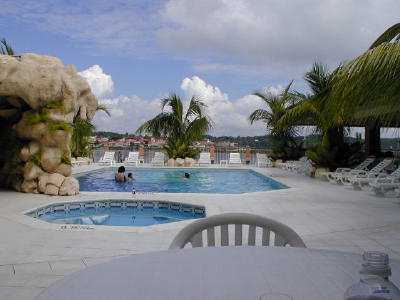
The next day was another trip to the ruins — for those who didn’t choose to sleep in. I slept. Heat and humidity really got to me. In the afternoon we took a fun boat ride around the lake — in two boats — and landed at the town of Flores. It’s amazing how lovely a pretty pink town can look from a distance, but up close when you walk through the dirty narrow streets, it loses some of its luster.
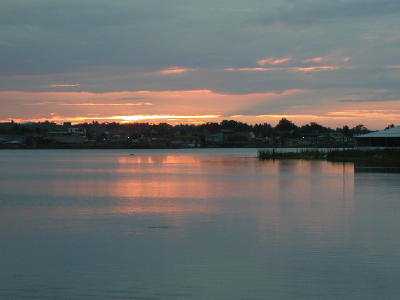
The next morning we again boarded our bus and headed for Belize. This was again a trip on narrow roads and sometimes dusty — except this time we had an armed escort in a following car. Our guide explained that the area we were traveling through had a history of bandits who have found robbing tourist buses a good way to finance their revolution, or whatever. Consequently, Elderhostel arranges accompaniment for the bus — good idea, I guess, though it made us feel a little leery.
Our border stop was a bit more hassle than it had been between Honduras and Guatemala, but after unloading everyone and walking us through to the Belize side, they finally let our bus through. At least we didn’t have to go through all the luggage.

Our next stop was at Xunantunich (pronounced "shun an too nick") which means "Stone Maiden". This is a Mayan ruin I had never heard of, and it was very impressive. It’s not too big but is at the top of a high hill — we took a cable ferry and shuttle vans to get to it — and the buildings have a great view. It was first settled in 400 B.C. and abandoned in 950 — 1000 A.D. The large structures were probably built sometime between 600 — 700 A.D.. The largest is called the Castillo and has fantastic friezes on both the west and east sides representing moon, planets and various Mayan gods.
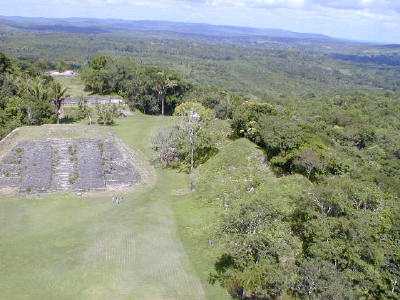
After a long, rather scary climb to the top of the Castillo, we really appreciated the view (and the breeze to cool off a bit.)
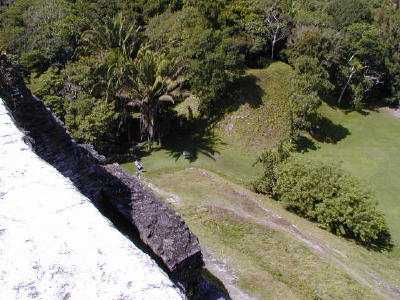
We then toured through the rest of the smaller constructions, which were residences of the ruling families.
After checking into our hotel at San Ignacio, our afternoon excursion was to a Butterfly farm where they raise Blue Morphos — one of the more beautiful butterflies in the world. With its iridescent blue top wings, it makes a fantastic splash of color when it flys. But when it sits still it’s very plain looking — camouflaged.

We enjoyed standing inside the breeding cage and having the butterflies flying all around us.